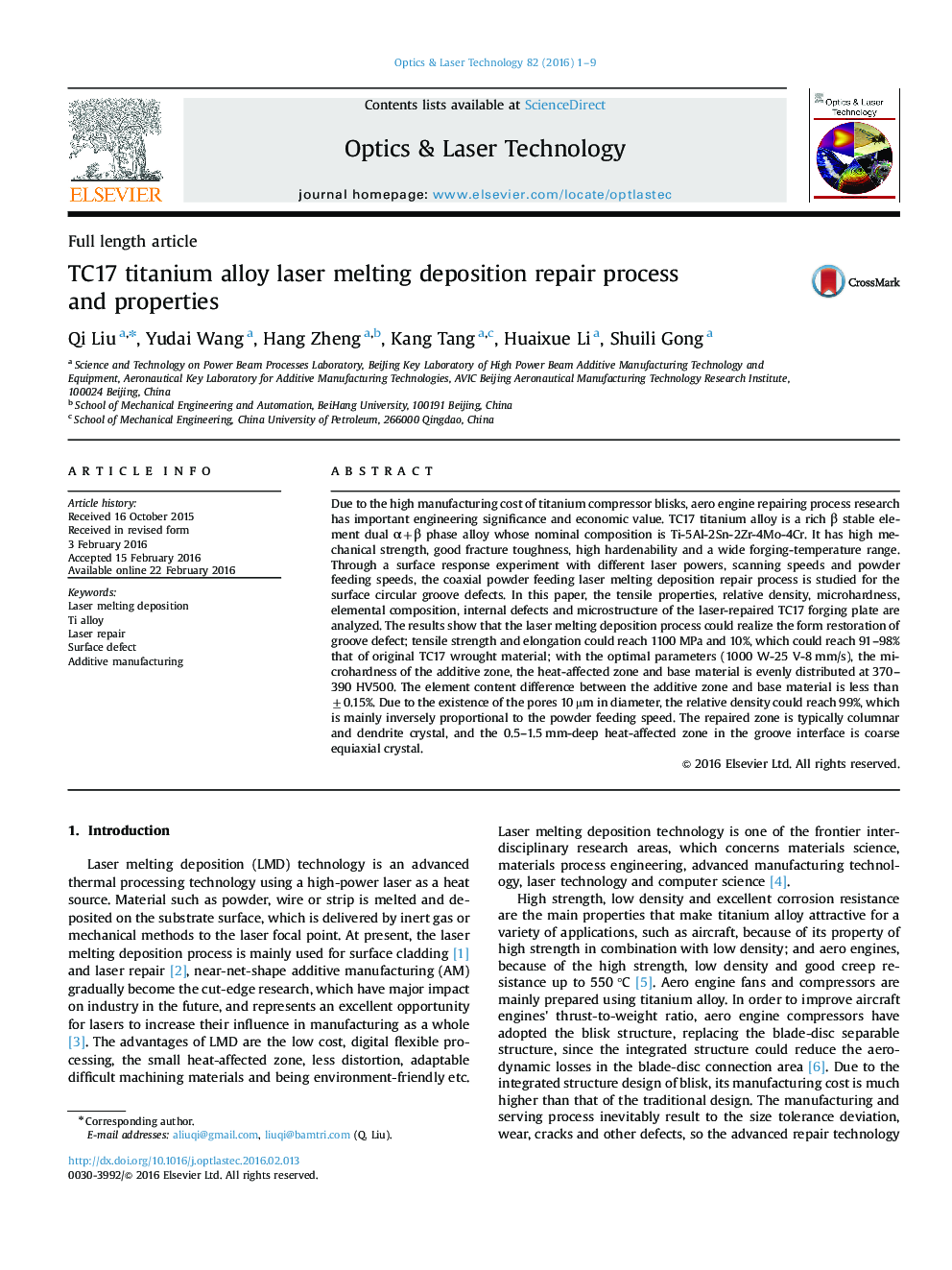| Article ID | Journal | Published Year | Pages | File Type |
|---|---|---|---|---|
| 733362 | Optics & Laser Technology | 2016 | 9 Pages |
•The laser melting deposition could realize the form restoration of groove defect.•Tensile strength and elongation could reach relatively 1100 MPa and 10%.•Relative density of LMD repaired zone could reach 99%.•Element content difference of LMD repaired zone is less than ±0.15%.•Microhardness of repaired zone is evenly distributed at 370–390 HV500.
Due to the high manufacturing cost of titanium compressor blisks, aero engine repairing process research has important engineering significance and economic value. TC17 titanium alloy is a rich β stable element dual α+β phase alloy whose nominal composition is Ti-5Al-2Sn-2Zr-4Mo-4Cr. It has high mechanical strength, good fracture toughness, high hardenability and a wide forging-temperature range. Through a surface response experiment with different laser powers, scanning speeds and powder feeding speeds, the coaxial powder feeding laser melting deposition repair process is studied for the surface circular groove defects. In this paper, the tensile properties, relative density, microhardness, elemental composition, internal defects and microstructure of the laser-repaired TC17 forging plate are analyzed. The results show that the laser melting deposition process could realize the form restoration of groove defect; tensile strength and elongation could reach 1100 MPa and 10%, which could reach 91–98% that of original TC17 wrought material; with the optimal parameters (1000 W-25 V-8 mm/s), the microhardness of the additive zone, the heat-affected zone and base material is evenly distributed at 370–390 HV500. The element content difference between the additive zone and base material is less than ±0.15%. Due to the existence of the pores 10 µm in diameter, the relative density could reach 99%, which is mainly inversely proportional to the powder feeding speed. The repaired zone is typically columnar and dendrite crystal, and the 0.5–1.5 mm-deep heat-affected zone in the groove interface is coarse equiaxial crystal.
Graphical abstractFigure optionsDownload full-size imageDownload as PowerPoint slide
